1. Templating
Xray
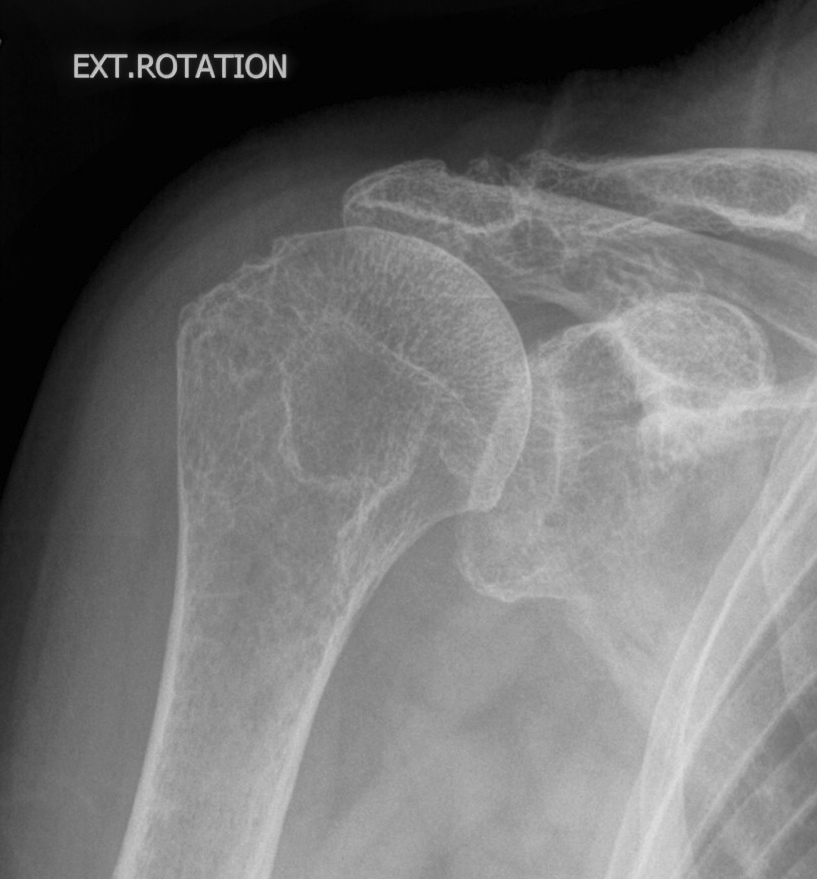
AP in plane of scapula
- template glenoid
- most inferior screw is in thick bone of scapular axillary border
AP humerus
- size and fit of diaphyseal and metaphyseal humeral components
CT
Axial
- assess glenoid bone stock / version
- normally no posterior wear in cuff arthropathy
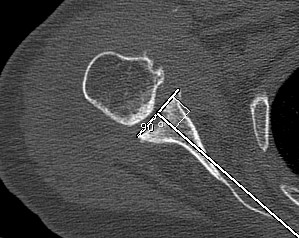
Coronal
- often superior wear
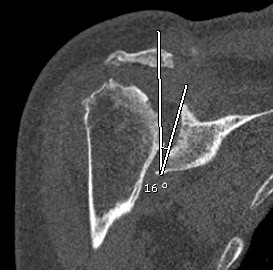
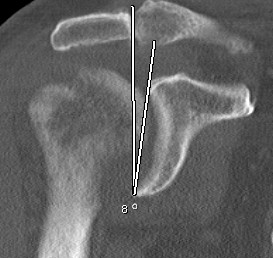
2. Deltopectoral approach
Incision
- long
- need to be able to access clavicle
- make need to perform clavicular osteotomy
Approach
- take SSC and capsule off LT and humerus
- often done with osteotomy as per TSR
- identify and protect axillary nerve
- take part of CAL
- remove capsule from inferior humeral neck + any osteophytes
3. Humeral resection using guide
Make entry point in humeral head
- hand ream to determine size of stem
- insert stem with cutting block attached
- 0o or 20o (c.f. TSR)
- 155o cut
- plane of cut laterally just below anatomical neck
- usually takes a couple of millimetres of GT
4. Glenoid
Remove capsule and labrum
- protect axillary nerve at all times
- mobilise SSC anteriorly
- need to be able to palpate anterior glenoid
- identify axillary border of scapula
- release triceps and capsule inferiorly
- must be able to feel inferior glenoid and spine
Good exposure of glenoid is key to reverse TSR
- sandbag behind spine / allows scapula to fall posterior
- tilt bed up on side of operation
- posterior and inferior glenoid retractors
Centering Guide wire passed
- centre of inferior circle of glenoid
- should exit scapula anteriorly about 3cm medial to glenoid
- ensure not too anterior as anterior screws can have little purchase
- ensure inferior screw will be in inferior good bone
- metaglene needs to be positioned low to prevent inferior impingement and dislocation
- wire needs to angle slightly inferior rather than slightly superior
Ream
- symmetrically ream
- remove only cartilage, just to subchondral bone
Drill central peg hole
Insert metaglene
- press fit central peg
- usually only one size
- rotate so superior screw will be in line with base of coracoid
Inferior screw
- drill long screw (minimum 35 mm)
- should be in good bone
- is most important screw
- will exit cortex somewhere
- insert locking screw
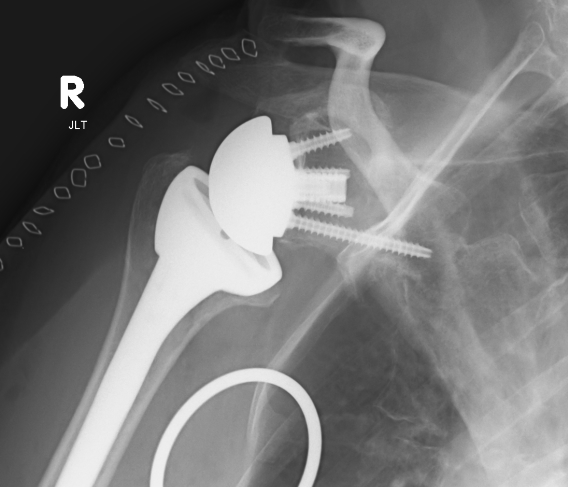
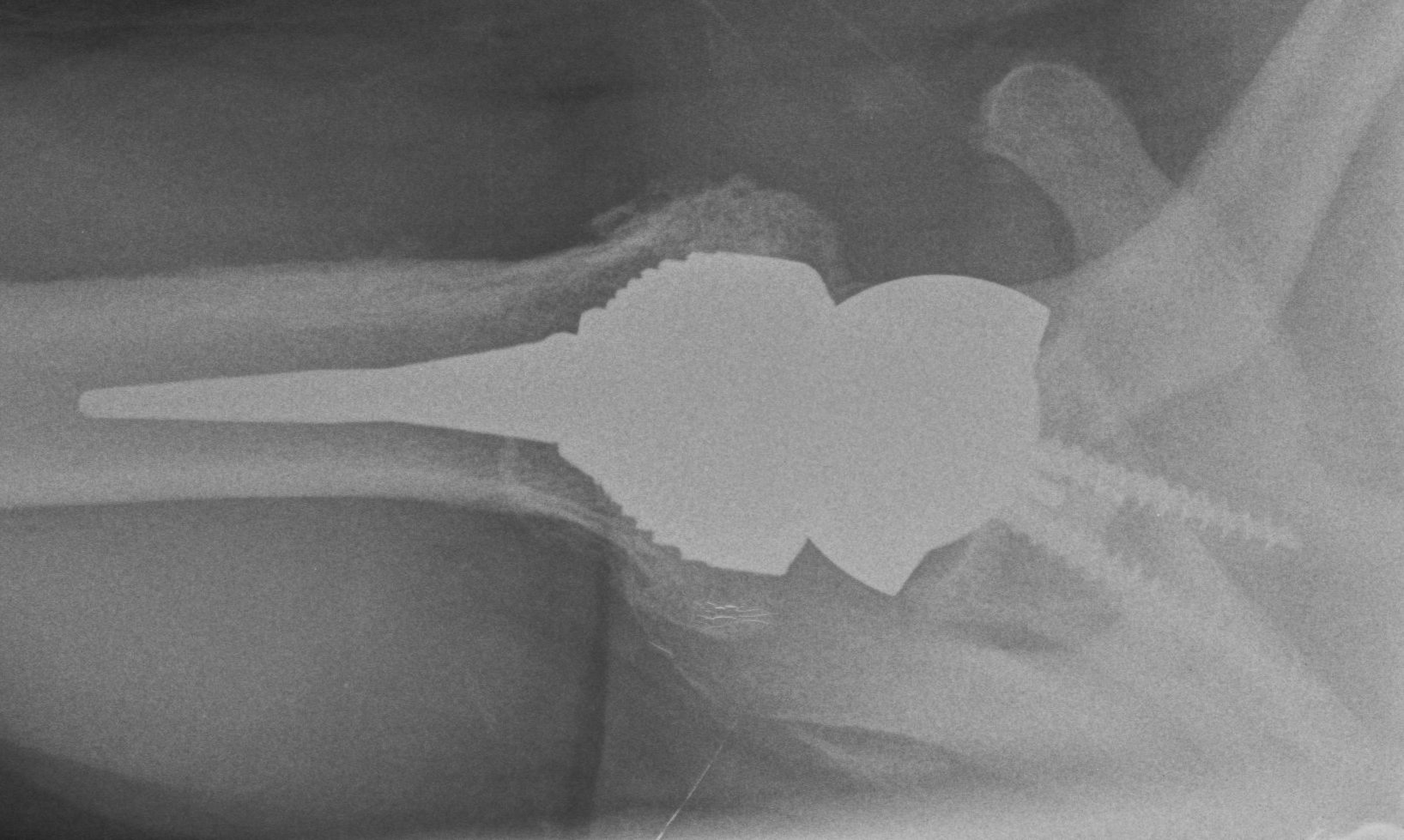
Superior locking screw
- feel anterior and posterior edges of coracoid
- aim between
- again will exit cortex
- 25 - 30 mm screw
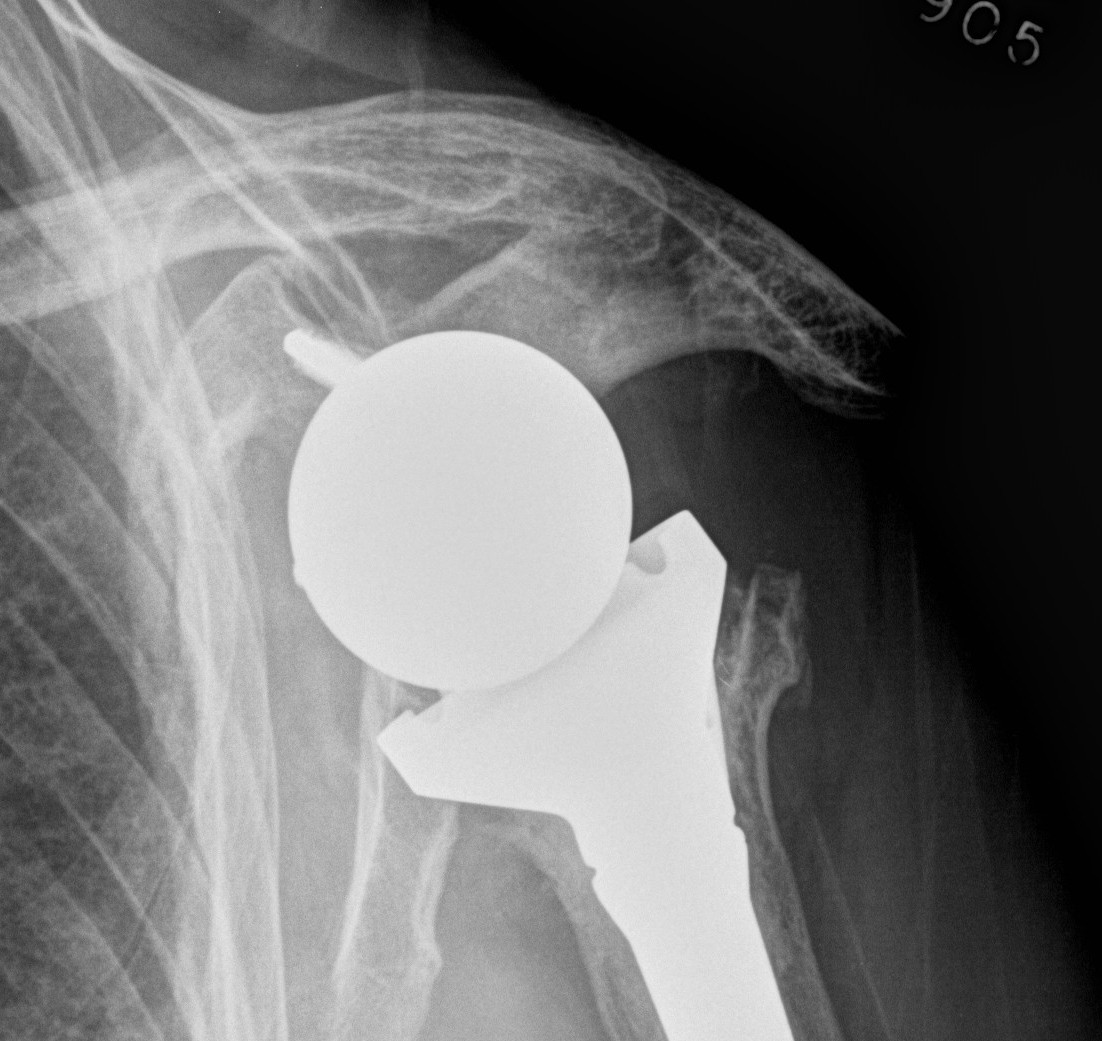
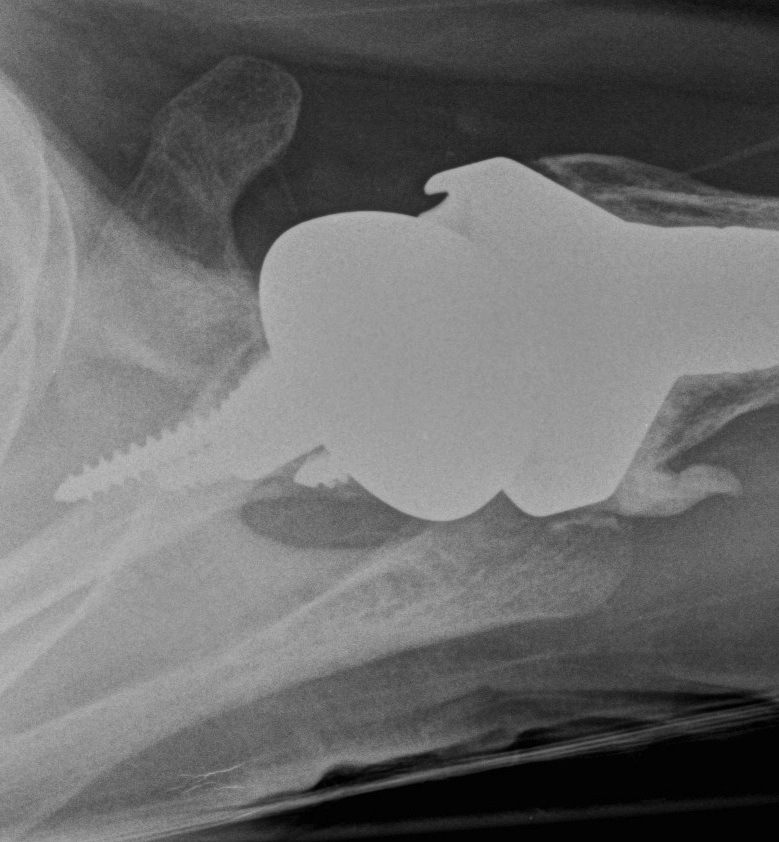
Anterior and posterior non locking screws/ not in every design
- are predetermined to be divergent
- get best bite possible
- can use locking or non locking
Add glenosphere
- can wait until have done humeral component and trial
- do have option for eccentric glenosphere
- this overhangs inferiorly, preventing notching / impingement / possible dislocation
- otherwise, if happy with position, choose size and screw in place
5. Ream and trial humeral component
Set rotation
- is an eccentric option
- ream over trial
- insert stem and metaphyseal component
- add liner (+3, +6, +9)
Trial stability
- in full ER will open slightly
- adduct and ensure not dislocating / put hand in armpit
- shuck test - entire shoulder should move first
7. L'Episcopo
Consider Latissmus Dorsi transfer
- if no functioning external rotators
- cannot raise hand to mouth
- severe fatty infiltration / tears in IS / Tm
Detach LD anteriorly
- pass front to back
- suture via drill holes to the posterior aspect of the humerus
8. Closure SSC / LT
Technique
- 5 ticron
- through drill holes in humerus
- pass around stem
9. Rehab
Protocol
- 6/52 passive forward flexion
- 6/52 active assist
- at 3-12 begin muscle strengthening
